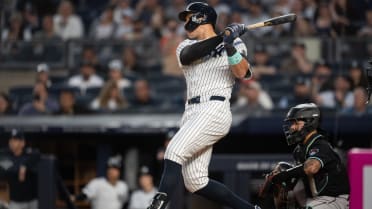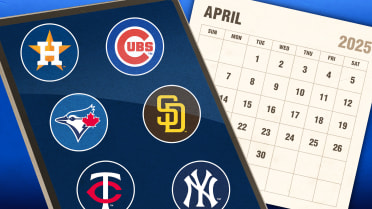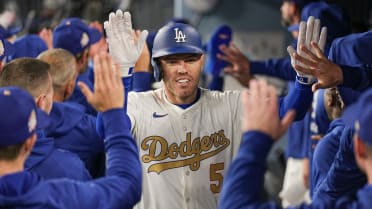CLEARWATER, Fla. -- Imagine if Bryce Harper had a little more luck on his side.
Imagine the numbers then.
Harper smashed an opposite-field home run in the first inning in his Grapefruit League debut on Friday in the Phillies' 3-0 victory over the Pirates at BayCare Ballpark. He hit the ball 102.1 mph. Harper singled to right in the third. He hit that one 110.9 mph.
“It means something,” Harper said afterward. “I’m not one of those guys that says, 'Well, it’s just Spring Training.' I feel good. If you’re going out there and punching [out], I understand it’s Spring Training, but I still want to play well and perform and know where my swing is at, see what I need to work on. I’m just glad I saw some pitches.”
Harper batted .268 with 13 home runs, 33 RBIs, a .962 OPS and 157 OPS+ in 58 games last season. His .420 on-base percentage was the second-best mark of his career. His .542 slugging percentage was the third-best. Harper hit the ball hard throughout the season, but a balky back spoiled what might have been a strong final month.
But here is something to consider: A strong argument can be made that Harper also was one of the unluckiest hitters in baseball last season. He had a 40-point difference between his batting average and expected batting average (.308), which ranked 25th out of 331 hitters, according to Statcast. The 114-point difference between his slugging percentage and expected slugging percentage (.656) ranked third. The 53-point difference between his .400 wOBA vs. his expected xwOBA (.453) ranked 12th.
“Obviously, in the 60-game season, it stands out more, too,” Phillies hitting coach Joe Dillon said. “There were several games early when we had the wind blowing in and he crushed some balls. There were a couple balls at home that he killed that should have been on the concourse. They ended up hitting the wall or being caught. That happens four or five times in 60 games, and it skews the numbers. But when he impacts the ball, it’s as good as anybody in the game. If we can get his contact rates to go up, then he’s going to be right there.”
Harper made more contact last season. After he struck out 178 times and walked 99 times in 2019, he struck out 43 times and walked 49 times in 2020.
Harper’s strikeout rate dropped 8.5 percentage points from 2019 (26.1 percent) to '20 (17.6). It was the largest drop of any qualified hitter the past two seasons.
It is not easy to do what Harper did. Only a few other hitters have had similar decreases in recent seasons: Cody Bellinger (7.5 percent) from 2018-19, Corey Dickerson (9.2 percent) from 2017-18, Trevor Story (8.8 percent) from 2017-18 and Kris Bryant (8.6 percent) from 2015-16.
It would have been interesting to see if Harper could have finished the season with more walks than strikeouts over a 162-game campaign. He came close in 2015 when he won the National League Most Valuable Player Award (131 strikeouts, 124 walks) and again in '16 (117 strikeouts, 108 walks).
“It’s just 60 games,” Harper said, unimpressed. “Such a short season. I’m not playing 162. Only playing 60. I had a 102 more games to play. I don’t really call [having more walks than strikeouts] an accomplishment. Of course you don’t want to strike out as much. I take a couple shots sometimes, and I think that’s what gets me in trouble in striking out. But I’m always going to walk a lot. I feel like I am, at least. I feel like my goal every year is to get 100 walks. My OBP is going to be high, and hopefully my average will be a little bit higher.”
It should be, especially if his luck evens out.
“Bryce is special,” Dillon said. “Obviously, he’s [an] ex-MVP, multiyear All-Star. With him, it’s just really controlling his environment, controlling his effort level, controlling his intent. Obviously, we know Bryce has power. We know he can go anywhere, anytime, any count, any field, in any conditions, off any pitcher. He doesn’t need to hit it in the second deck. It’s just about controlling his energy and controlling his intent. And when he does that, he’s more consistent, he’s going to make better decisions, swing at better pitches and he’s still going to impact the ball. ... If we can get him to do that more, when he does that, he’s going to have his MVP-year-type numbers. He’s going to be productive. It’s just how productive is he going to be? When he can control his environment, he’s going to be on the MVP side.
“He looks great right now. He’s in a great spot. I’m looking for a big year out of him.”
Senior Reporter Todd Zolecki has covered the Phillies since 2003, and for MLB.com since 2009.




